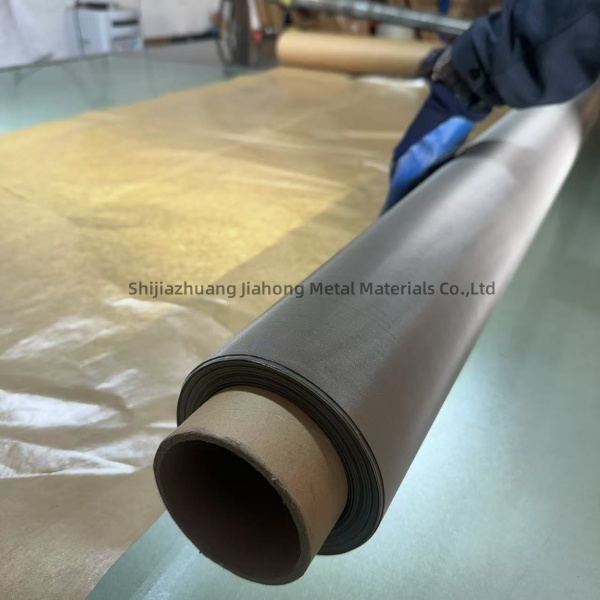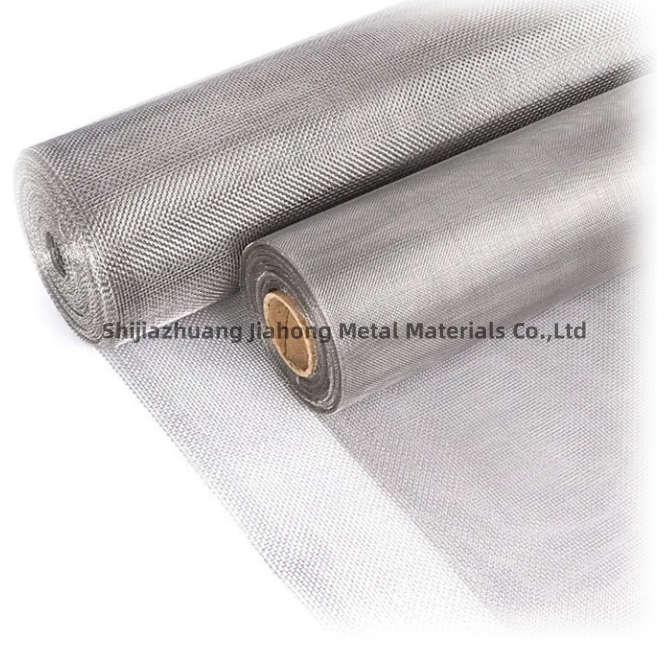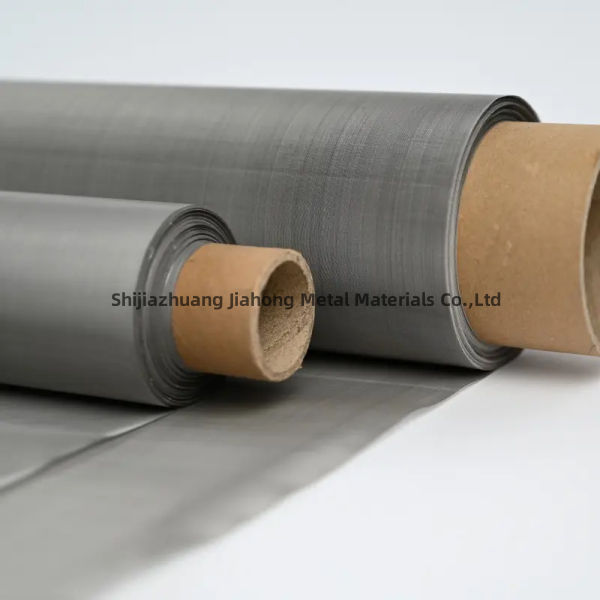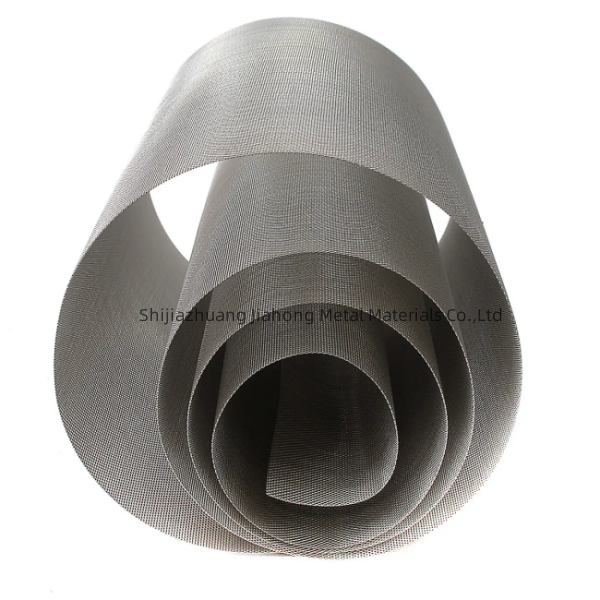Description
Common Nichrome alloys, such as Nichrome 2080, 1560, 2025 grades Ni-Cr Alloy wire mesh
(1) Nichrome 2080 alloy is also commonly referred to as:
- UNS N06003
- Nichrome 80-20
- Nichrome 80/20
- Nichrome 80
- Alloy 650
- Alloy HT 80
- X20H80
- NiCr 80/20
- Ni80Cr20
(2) Weaving sizes of the nichrome wire mesh
- Mesh weaving type: Plain/twill/dutch weaving.
- Mesh size: 1-2000 mesh
- Roll size: 1x30m 1.2*30m 1.5*30m… Max width can be 6m width.
- Cutting & Rolling & Welding Service can be provided for free
- Stock mesh size of the Nichrome V wire mesh: 10# 20# 30# 40# 50# 60# 80# 100# 120# 200#. More info, contact us at info@jiahongmetal.com
3.Features of the Nichrome V Alloy Wire Mesh
| Property Classification |
Specific Property |
Detailed Description |
| Density |
Approximately 8.4 g/cm³ |
This density value contributes to the mesh’s durability. It gives the mesh sufficient mass to withstand mechanical forces, making it suitable for applications where strength is crucial, such as in industrial sieving equipment. |
| Melting Point |
Around 1400°C |
A high melting point enables the mesh to maintain its structural integrity in high – temperature environments. It can be used in applications like furnace linings or heating elements in high – temperature industrial processes without melting or deforming easily. |
| Thermal Conductivity |
Approximately 11 W/(m·K) at 20°C |
The thermal conductivity is relatively moderate. This property allows the mesh to transfer heat effectively while also providing some level of insulation. It is beneficial in applications where controlled heat transfer is required, such as in heat exchangers used in certain chemical processes. |
| Coefficient of Linear Expansion |
Approximately 14×10⁻⁶/°C (20 – 100°C) |
This coefficient ensures that the mesh experiences minimal dimensional changes within the specified temperature range. It helps maintain the accuracy and performance of the mesh in applications where temperature variations are common, like in electrical heating systems. |
| Electrical Resistivity |
High, approximately 1.1 μΩ·m (20°C) |
The high electrical resistivity is one of the key features of Nichrome 2080 alloy wire mesh. It is highly efficient at converting electrical energy into heat, making it the material of choice for heating elements in a wide variety of electrical appliances, from household toasters to industrial heating equipment. |
| Magnetism |
Weakly magnetic |
The weak magnetic property of the mesh makes it suitable for applications where magnetic interference needs to be minimized. For example, it can be used in electronic devices or near magnetic – sensitive equipment without causing disruptions. |
- Oxidation Resistance: Nichrome 2080 alloy wire mesh forms a stable, protective chromium – rich oxide layer on its surface when exposed to high temperatures. This layer acts as a barrier, preventing further oxidation and degradation of the mesh. It can maintain good oxidation resistance in air at temperatures up to around 1100°C, ensuring its long – term performance in high – temperature applications.
- Corrosion Resistance: It exhibits good resistance to many common corrosive substances. While not as corrosion – resistant as some specialized alloys like Hastelloy C – 276, it can withstand mild acids, alkalis, and most non – aggressive chemical environments. This makes it suitable for applications where the exposure to corrosive agents is limited or the corrosive substances are not highly concentrated.
- Chemical Reactivity: Chemically, Nichrome 2080 alloy wire mesh is relatively stable at room temperature. Although it may react with strong chemicals under extreme conditions, the reaction rate is slow. This stability provides reliability in normal operating conditions across various industries.
Nichrome 2080 alloy wire mesh, with its excellent properties, sees wide use across multiple industries.
- Electrical & Heating
- Heating Elements: Ideal for appliances like stoves, hair dryers and industrial ovens. High resistivity and oxidation resistance enable efficient and safe heat conversion.
- Insulation & Screening: Used in electrical devices to prevent short – circuits and reduce electromagnetic interference, thanks to its weak magnetism and good resistance.
- Industrial Manufacturing
- Filtration & Sieving: Employed in mining, food and chemical industries. Different mesh sizes separate particles effectively.
- Heat Exchangers: Moderate thermal conductivity and oxidation resistance make it suitable for heat exchangers, improving heat transfer efficiency.
- Aerospace & Defense
- High – Temperature Components: Used in aircraft engines and missile systems. Maintains performance at high temperatures.
- Structural Reinforcement: Enhances aerospace structures’ strength. High strength – to – weight ratio and corrosion resistance reduce weight.
- Medical Field
- Medical Equipment: Suitable for certain equipment due to corrosion resistance and biocompatibility.
- Environmental Protection
- Air Filtration: Traps dust and pollen in air – handling systems. Resists corrosion in humid environments.
- Waste Treatment: Used in incineration and recycling plants. Resists acidic gases and extends equipment lifespan.





Reviews
There are no reviews yet.